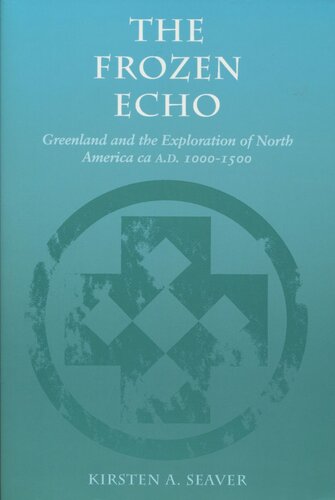

Most ebook files are in PDF format, so you can easily read them using various software such as Foxit Reader or directly on the Google Chrome browser.
Some ebook files are released by publishers in other formats such as .awz, .mobi, .epub, .fb2, etc. You may need to install specific software to read these formats on mobile/PC, such as Calibre.
Please read the tutorial at this link: https://ebookbell.com/faq
We offer FREE conversion to the popular formats you request; however, this may take some time. Therefore, right after payment, please email us, and we will try to provide the service as quickly as possible.
For some exceptional file formats or broken links (if any), please refrain from opening any disputes. Instead, email us first, and we will try to assist within a maximum of 6 hours.
EbookBell Team

5.0
88 reviewsIt is now generally accepted the Leif Eriksson sailed from Greenland across the Davis Strait and made landfalls on the North American continent almost a thousand years ago, but what happened in this vast area during the next five hundred years has long been a source of disagreement among scholars. Using new archeological, scientific, and documentary information (much of it in Scandinavian languages that are a bar to most Western historians), this book confronts many of the unanswered questions about early exploration and colonization along the shores of the Davis Strait. The author brings together two distinct but tangential fields of inquiry: the history of medieval Greenland and its connections with the Norse discovery of North America, and fifteenth-century British maritime history and pre-colonial voyages to North America, including that of John Cabot. In order to evaluate the situation in Norse Greenland at the end of the fifteenth century (when documented English and Portuguese voyages of northern exploration began), the author follows the colony's development—its domestic economy and foreign trade and its cultural and ecclesiastical affinities—from its inception in the tenth century. In the process, she looks critically at commonly held views that have gone unchallenged until now. Among the questions about which the author sets forth new evidence and conclusions are: the extent to which Greenlanders explored and exploited North America after Leif Eriksson, the reasons for the baffling disappearance of the Norse settlement in Greenland, the connection between their disappearance and the beginning of the voyages of exploration that began around A.D. 1500, the routes by which information concerning previous voyages traveled, the history before Cabot of the advance of English fishing fleets from Icelandic waters to the coasts of Labrador, and the influence of the roman Catholic Church on Norse Greenland.